Introduction
Not so long ago RStudio released the R package ‘reticulate‘, it is an R interface to Python. Of course, it was already possible to execute python scripts from within R, but this integration takes it one step further. Imported Python modules, classes and functions can be called inside an R session as if it were just native R functions.
Below you’ll find some screen shot code snippets of using certain Python modules within R with the reticulate package. On my GitHub page you’ll find the R files from which these snippets were taken from.
Using python packages
The nice thing about reticulate in RStudio is the support for code completion. When you have imported a python module, RStudio will recognize the methods that are available in the python module:
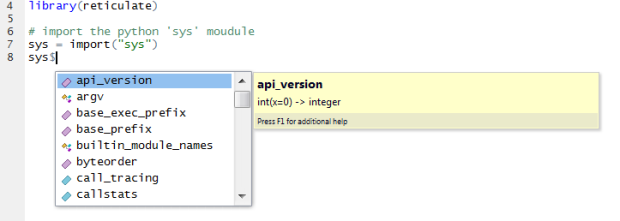
The clarifai module
Clarifai provides a set of computer vision API’s for image recognition, face detection, extracting tags, etc. There is an official python module and there is also an R package by Guarav Sood, but it exposes less functionality. So I am going to use the python module in R. The following code snippet shows how easy it is to call python functions.
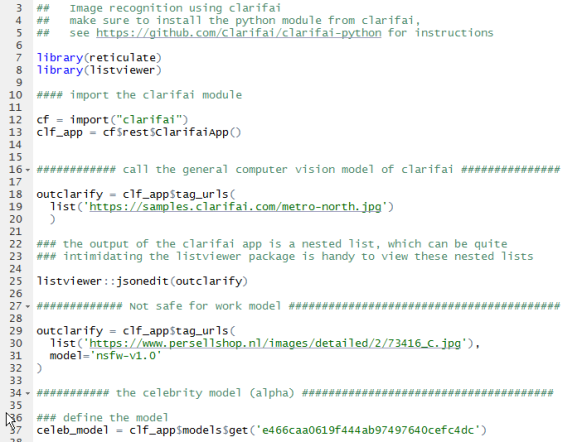
The output returned from the clarifai call is a nested list and can be quit intimidating at first sight. To browse trough these nested lists and to get a better idea of what is in those lists, you can use the package listviewer:
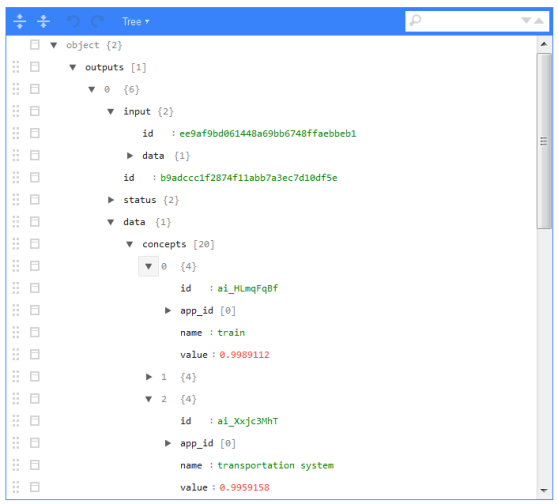
The pattern.nl module
The pattern.nl module contains a fast part-of-speech tagger for Dutch, sentiment analysis, and tools for Dutch verb conjugation and noun singularization & pluralization. At the moment it does not support python 3. That is not a big deal, I am using Anaconda and created a Python 2.7 environment to install pattern.nl.
The nice thing of the reticulate package is that it allows you to choose a specific Python environment to be used.
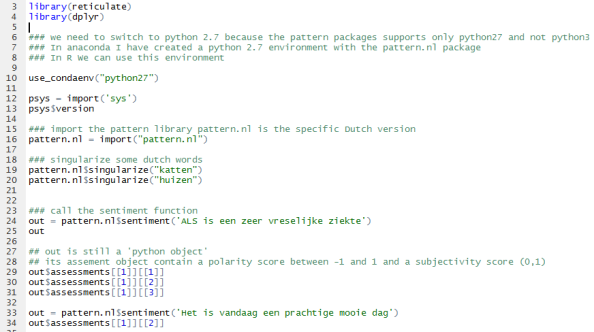
The pytorch module
pytorch is a python package that provides tensor computations and deep neural networks. There is no ‘R torch’ equivalent, but we can use reticulate in R. There is an example of training a logistic regression in pytorch, see the code here. It takes just a little rewrite of this code to make this work in R. See the first few lines in the figure below.
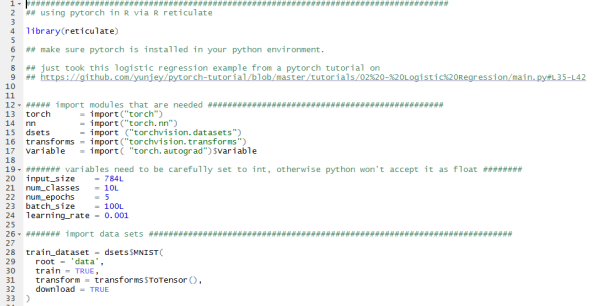
Conclusion
As a data scientist you should know both R and Python, the reticulate package is no excuse for not learning Python! However, the reticulate package can be very useful if you want to do all your analysis in the RStudio environment. It works very well.
For example, I have used rvest to scrape some Dutch news texts, then used the Python module pattern.nl for Dutch sentiment and wrote an R Markdown document to present the results. Then the reticulate package is a nice way to keep everything in one environment.
Cheers, Longhow


I have just installed python 2.7 via the anaconda distribution. I am unable to connect to python from R via the reticulate package. Any attempt to follow your code fails with the R session getting aborted. This happens even after running the py_config command. Please let me know what the problem could be. Where should I start with the troubleshooting?
LikeLike
I am not sure what it is. But you could start an issue at the reticulate site at GitHub
LikeLike
Pingback: От "R против Python" к "R и Python": используем оба в одном проекте
Pingback: От «R против Python» к «R и Python»: два в одном - Полезное для разработчика
Pingback: 【后端开发】R和Python谁更好? – 传承者
Pingback: 摩登5指定主管抛却 PK,拥抱协作R 和 Python 能做出甚么新花样? 摩登5注册首页_官网指定招商主管_科技网
Pingback: R和Python谁更好?-久久源码网